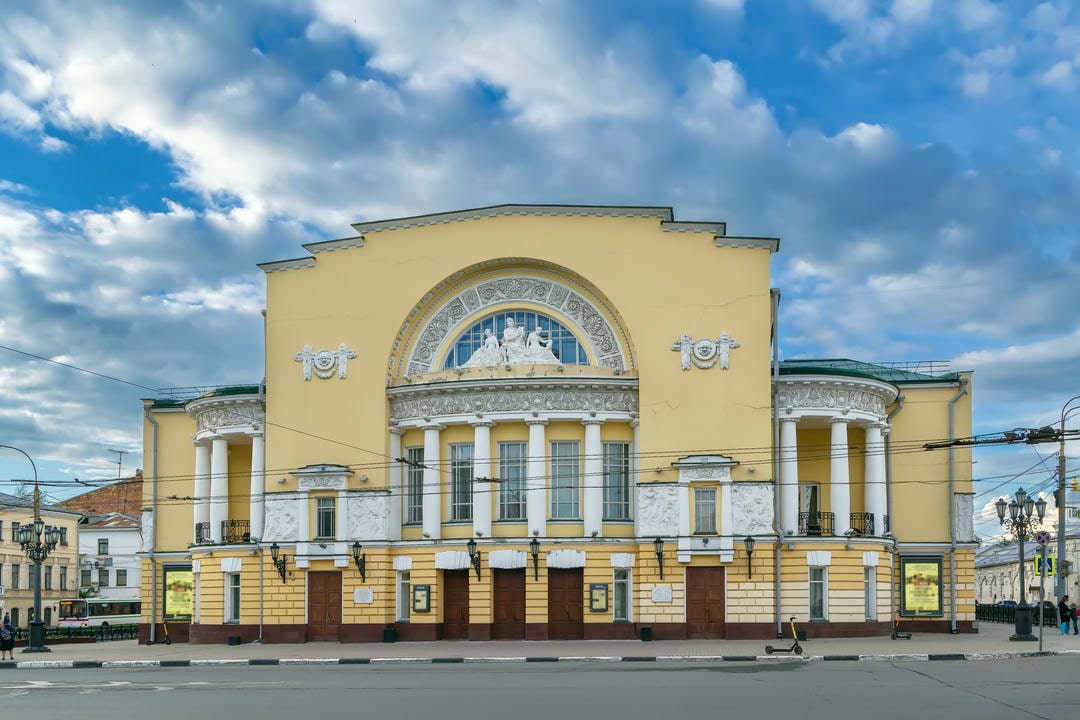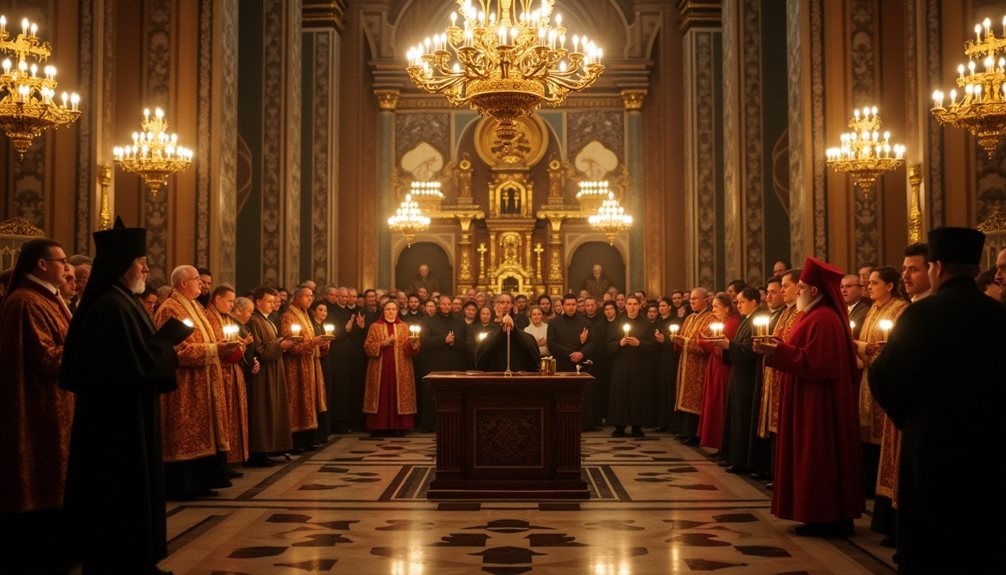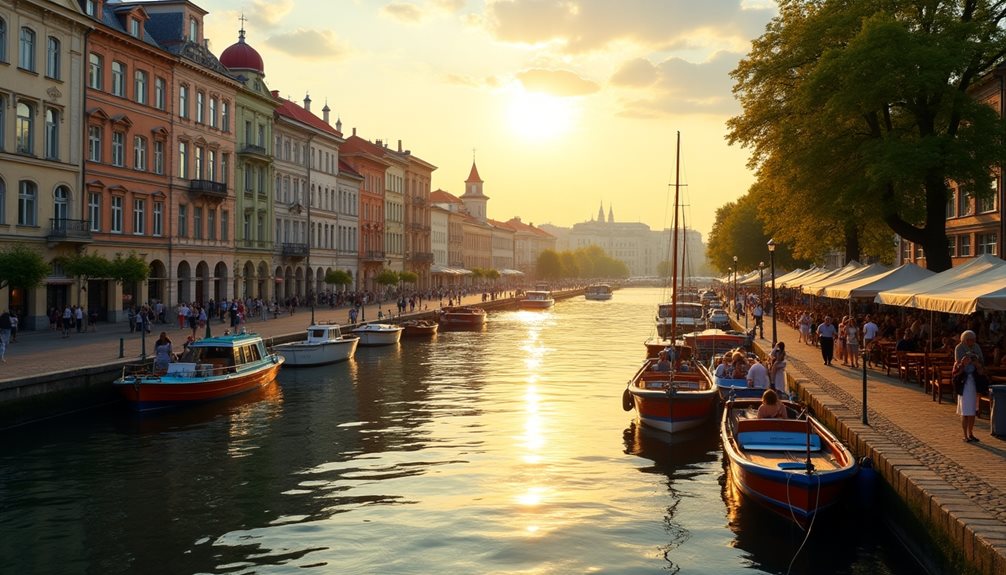Ballet has long been a cherished art form in Russia, deeply woven into the fabric of the country’s cultural identity. For centuries, the Russian ballet tradition has captivated audiences worldwide with its unparalleled artistry, technical mastery, and emotional resonance. But the importance of ballet in Russia extends far beyond the stage; it is a reflection of the nation’s history, values, and collective spirit.
Today, we will explore the multifaceted reasons why ballet holds such a revered place in Russian society. From its origins as a symbol of imperial power to its role in preserving national heritage, the significance of this classical dance form cannot be overstated. We will examine the factors that have contributed to Russia’s enduring ballet legacy, the renowned institutions that have nurtured its development, and the legendary dancers whose artistry has transformed the art form globally.
The Roots of Russian Ballet

The origins of ballet in Russia can be traced back to the early 18th century when Tsar Peter the Great sought to modernize and westernize the country. Inspired by the ballet traditions of France and Italy, the Russian imperial court began to embrace this elegant and refined art form. The establishment of the first Russian ballet school in 1738, the Imperial Theatre School in St. Petersburg, marked a pivotal moment in the evolution of ballet in the country.
Under the patronage of the Romanov dynasty, ballet flourished in Russia, becoming a symbol of the nation’s cultural sophistication and global influence. The country’s ballet companies, such as the Kirov Ballet (now known as the Mariinsky Ballet) and the Bolshoi Ballet, soon gained international renown for their technical virtuosity, dramatic interpretations, and distinctive style.
The golden age of Russian ballet is often associated with the late 19th and early 20th centuries when legendary choreographers like Marius Petipa and Mikhail Fokine pushed the boundaries of the art form. Their iconic productions, such as “Swan Lake,” “The Nutcracker,” and “The Rite of Spring,” not only captivated audiences but also cemented Russia’s reputation as a global leader in ballet.
Ballet in Russian Culture
Ballet’s significance in Russia extends far beyond its artistic merits; it is deeply intertwined with the country’s cultural identity and national pride. Here are some key reasons why ballet holds such a revered place in Russian society:
A Symbol of National Identity
For many Russians, ballet represents a tangible link to their cultural heritage and a source of national pride. The country’s ballet traditions, passed down through generations, have become a defining aspect of Russian identity, both at home and abroad. The success of Russian ballet companies on the international stage is often seen as a reflection of the nation’s artistic prowess and global influence.
Preserving Russian Heritage
Ballet has played a crucial role in preserving and transmitting Russian cultural traditions. Many of the most beloved ballet productions, such as “The Nutcracker” and “Sleeping Beauty,” are based on Russian folklore and fairy tales, serving as a means of passing down these stories to new generations. The preservation of these narratives through the medium of ballet has helped to safeguard the country’s rich cultural heritage.
A Unifying Force
Ballet has the power to transcend social and political divides, serving as a unifying force within Russian society. During times of political and economic upheaval, ballet has provided a source of stability and national pride, offering a shared cultural experience that brings people together. The communal experience of attending a ballet performance, whether in a grand theater or a local cultural center, can foster a sense of community and shared identity among Russians.
A Reflection of Russian Values
The values and ideals that are celebrated in Russian ballet, such as discipline, dedication, and artistic excellence, are deeply rooted in the country’s cultural ethos. The rigorous training and technical mastery required of ballet dancers mirror the Russian emphasis on hard work, perseverance, and the pursuit of perfection. Ballet serves as a tangible expression of the Russian national character.
Legendary Male Dancers in Ballet
When thinking about ballet, iconic male dancers such as Mikhail Baryshnikov and Rudolf Nureyev inevitably come to mind. Their artistry has not only defined Russian ballet but also transformed the art form globally. These legendary performers showcased exceptional technique while enchanting audiences with their powerful interpretations and grace.
Baryshnikov’s dynamic leaps and Nureyev’s emotive storytelling set new standards for male dancing, pushing boundaries that were once thought limiting. Their performances resonate with themes of freedom and passion, inspiring countless dancers to explore their own artistic voices. By redefining masculinity in ballet, they have allowed future generations to express themselves without constraints, showcasing that strength can coexist with vulnerability.
Iconic Female Dancers

While male dancers like Baryshnikov and Nureyev have left an indelible mark on ballet history, the world of Russian ballet is equally enriched by its iconic female dancers. Anna Pavlova is often remembered for her ethereal grace in “The Dying Swan,” which redefined femininity in dance. Then there’s Maya Plisetskaya, celebrated for her powerful technique and emotive performances that pushed boundaries in roles like “Carmen.”
These dancers didn’t merely master their craft; they shaped the narrative of ballet itself, enchanting audiences with their iconic performances. Their contributions extended beyond technique; they helped redefine what it meant to be a female dancer on stage, melding strength with grace.
The Institutions that Nurture Russian Ballet
The enduring success of Russian ballet can be attributed to the country’s esteemed institutions that have played pivotal roles in cultivating and preserving this art form. These institutions not only train generations of exceptional dancers but also serve as guardians of the rich tradition that is Russian ballet.
The Vaganova School
Established in 1738, the Vaganova School (officially known as the Vaganova School of Russian Ballet) is one of the most prestigious ballet training institutions in the world. Named after legendary pedagogue Agrippina Vaganova, this school is renowned for its rigorous curriculum that blends classical technique with a uniquely Russian style and aesthetic. Many celebrated dancers, including Baryshnikov himself, honed their skills at this institution.
The Mariinsky Ballet
The Mariinsky Ballet, formerly known as the Kirov Ballet, is one of the oldest and most renowned ballet companies globally. Based in St. Petersburg, it has a rich history dating back to the 18th century and has been instrumental in developing and preserving Russia’s ballet tradition. The company’s repertoire includes iconic works such as “Swan Lake,” “The Nutcracker,” and “Sleeping Beauty,” which have become synonymous with the Russian ballet aesthetic.
The Bolshoi Ballet
Likewise, the Bolshoi Ballet in Moscow stands as another pillar of Russian ballet tradition. Established in the 18th century, it has long been considered one of the world’s greatest ballet companies known for its technical virtuosity and dramatic flair. Productions like “Giselle,” “Don Quixote,” and “The Flames of Paris” have captivated audiences worldwide while solidifying Russia’s status as a global leader in this art form.
These esteemed institutions have not only trained generations of exceptional dancers but also played crucial roles in preserving and evolving Russian ballet traditions. By upholding rigorous training standards and maintaining a repertoire rich with iconic works, these organizations ensure that this art form remains relevant on both national and international stages.
Russia’s Ballet Heritage
The significance of ballet in Russia extends far beyond the performances on stage, permeating various aspects of the country’s cultural and social landscapes. Ballet serves as a unifying force, transcending social and political divides to provide shared cultural experiences that bring people together and foster community identity, especially during turbulent times. It also represents social mobility, offering opportunities for talented individuals from diverse backgrounds to achieve recognition and transform their lives. Many esteemed dancers have emerged from humble beginnings, exemplifying how ballet can elevate one’s status.
Historically, Russia has utilized ballet as a diplomatic tool to showcase its cultural prowess globally. Performances and exchanges have strengthened international relationships while projecting positive images abroad. Beyond its role in dance, ballet has influenced other art forms, such as literature and visual arts. Literature has been shaped by ballet narratives, while visual arts often depict the aesthetic qualities of dancers. This cross-pollination enriches Russia’s overall artistic landscape.
In conclusion, ballet’s enduring presence in Russia underscores its profound impact on both culture and society. As it continues to captivate audiences with its blend of technical mastery and emotional depth, ballet remains a vital part of Russian heritage, transcending generations and borders alike. Its significance extends beyond the stage, reflecting the power of art to unite people, preserve history, and foster a sense of shared identity. This legacy is further reinforced by its integral role in education, where it instills discipline and creativity in young minds, ensuring its continued relevance and importance for years to come.




